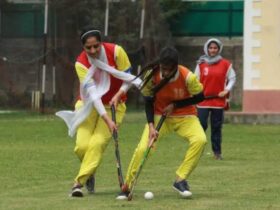Shreen Hamdani
Silk production in J&K has declined considerably over the past few decades. Sericulture, the technique of silk production, is an agro-industry, which has played an eminent role in the rural economy of Jammu & Kashmir State. Pertinently, Silk-fiber is a protein produced from the silk-glands of silkworms. In India, Mulberry Silk is produced extensively in the states of Karnataka, West Bengal and Jammu and Kashmir. Jammu and Kashmir, owing to its healthy climate during autumn and spring, is producing silk by rearing univoltine silkworms.
The Valley of Kashmir has the blessing of having been favored by the nature with a climate and altitude highly conducive for Mulberry-culture as such suitable for the advancement of Sericulture. These are the factors which further added strength to the belief that Kashmiris has the knowledge of rearing, reeling and weaving of silk much earlier than the Chinese and Tibetans knew it. In fact, the Knowledge of Sericulture in the Jammu and Kashmir State dates back to very old time which is evident from the reference available in the superb works of a number of travelers who visited this State in the past.
But, owing to the monopoly of government and turmoil like conditions in the state for past three to four decades, the sensitive industry of Silk has suffered severe setbacks. As against 1800- 2000 farmers who were associated with sericulture in every district three decades back, only 350- 400 farmers are presently rearing silk worms in each district.
In fact, in the past five decades, the silk production of the state has dwindled by fifty percent which means that on an average every year we have been losing 1% of silk production. As per different estimates and reports, the silk cocoons production in Kashmir was merely 8.32 lakh kilograms in 2009 as compared to 15 Lakhs in 1960. The decrease can be well attributed to the substantial decline in the number of silk rearing farmers, turmoil and government monopoly and several other factors.
It is worth mentioning that the rearing of cocoon crop runs for one month only, which starts from the first week of May. The short duration for rearing is also believed to be one of the reasons that caused disinterest among farmers.
On contacting Additional Director Sericulture, Dr. Farooq Malik for official statement, the concerned officer was unavailable.
Well, over the years Karnataka has taken a clear lead in the silk production. Karnataka produces 9000MT of mulberry silk out of which a total of 14000MT produced in the country, thus contributing to nearly 70% of the country’s total production. As a matter of worry, J&K now contributes just 2 percent to the country’s total silk production.
Pertinently, Jammu and Kashmir produces the best quality Bivoltine Mulberry silk in the country due to its longer length, better strength and shine mainly because of favorable climatic conditions. However, various estimates and reports from ground zero suggest that out of total production of cocoons every year only 20-25% is being consumed within the State and the rest is exported. As a matter of fact, currently, forty percent of the silk production comes from the Kashmir Valley, while 60 percent comes from the Jammu region.
Farmers on their part blame the short supply of mulberry leaves and fertilizers also being responsible for the debacle of the sericulture industry in the state.
Commenting on this grim veracity related to our silk production, Tauseef Ahmad, a Silk Farmer from Roshanabad Tangmarg said, “We lack basic facilities to upgrade the silk production. We face shortage of mulberry leaves and quality fertilizers as a result the sericulture industry is not showing impressive growth. One has to bear in mind that a farmer has to occupy one kanal of land for growing mulberry trees. The land remains occupied for whole year while as the farmers have to do raring of the silk cocoons for just one month. So, special attention is needed from the Department of Sericulture to keep the interests of farmers in this industry alive”.
Ground realities clearly suggest that sericulture sector is an important sector of our State which demands special attention in order to boost the overall economy of the State. Silk industry is the prominent industry of the Kashmir Valley. Sericulture as a sector has been the backbone of Kashmir economy. This industry has a rich history .There is great deal of evidence in ancient Sanskrit literature that the original home of silk is Kashmir. Mirza Muhammad Haider in his Tarikhi Rashide mentions mulberry trees (cultivated for their leaves for production of silk) as among the wonders of Kashmir. The great king of Kashmir Sultan Zain-ul Abideen who is maker of industrial Kashmir gave special attention to this industry by introducing better techniques.
Official reports reveal that Europe was the first continent with which Kashmir had started its silk trade. The reports show that in the year 1855, Kashmir was in a position to supply 25000 oz of silkworm seeds to Europe. By exporting silkworm seeds to Europe, the silk industry of Kashmir gained a pivotal position on the silk route of Europe.
However on account of the lack lustre research and lack of proper attention the silk production in Kashmir has gone down considerably over the past few years. According to the official data available, on an average Jammu region currently produces impressive 6 lakh kgs of cocoons per year while as production in Kashmir has plummeted to about 2.5 lakh kilograms. Till late eighties Kashmir dominated all the administrative divisions of the State not only in seed, mulberry and cocoon production but refined silk as well.
According to figures available, Kashmir was the chief supplier to the State’s silk industry generating nearly two third of the total production; however the political instability accentuated by militancy upturned the trend. Out of a total cocoon production of 10.36 lakh kilograms in 1988, Kashmir produced 6.65 kilograms while as Jammu’ share was only 3.71 kilograms. As a matter of reality, currently, forty percent of the silk production comes from the Kashmir Valley, while 60 percent comes from the Jammu region.
As per a statement released recently by the Apex Cluster Development Service Private Limited, the diagnostic study has tried to identify the growth constraints of the cluster through direct interface with the cluster stakeholders and understanding cluster product, process and value chain of Sericulture industry. The study has focused to understand the key challenges faced by the cluster and prepared a strategic action plan to address the issues.

















Leave a Reply